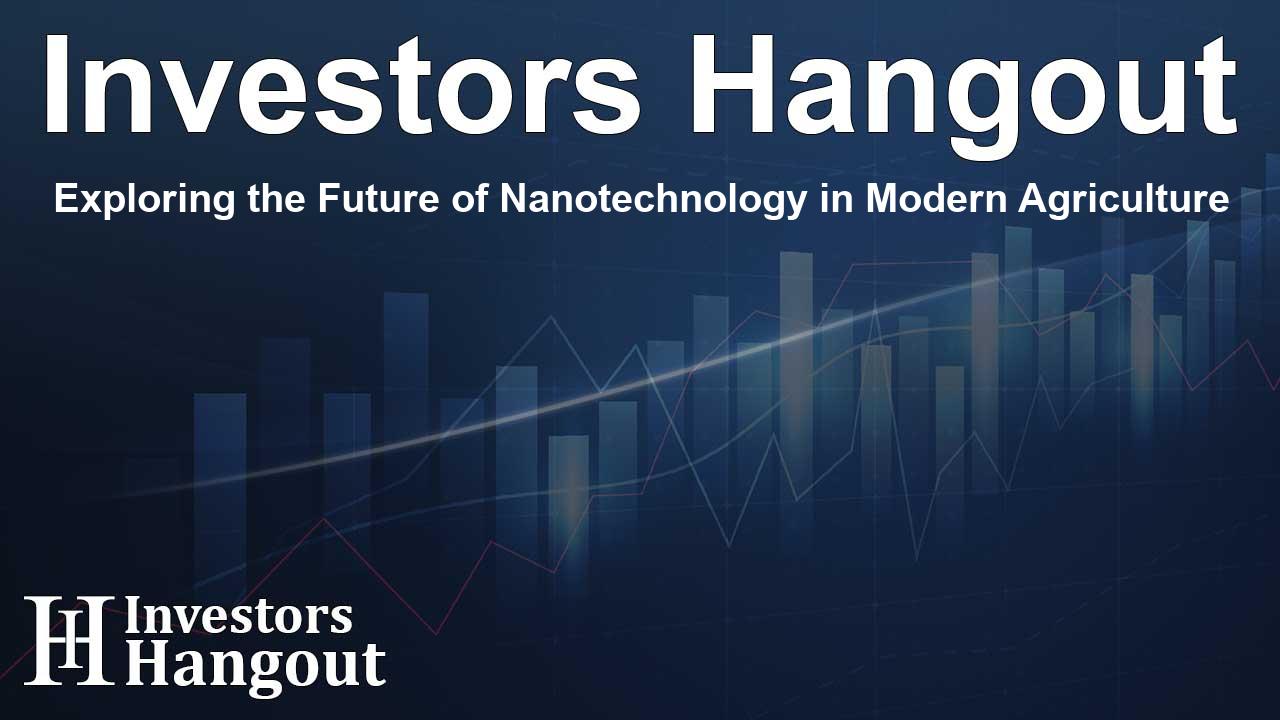Exploring the Future of Nanotechnology in Modern Agriculture

The Growing Revolution of Nanotechnology in Agriculture
The landscape of agriculture is rapidly changing with the adoption of nanotechnology. This innovative approach brings forth an evolution in agricultural practices, offering sustainable solutions that improve productivity and efficiency. The nanotechnology in agriculture market is predicted to expand significantly, reflecting an exciting future.
Market Insights
The nanotechnology in agriculture market was valued at USD 2,963 million recently and is anticipated to surge to USD 6,743.3 million by the end of the period forecasted. This translates to a compound annual growth rate (CAGR) of 12.7%, underscoring the sector's progression towards modernization and adaptation. The increasing focus on eco-friendly agricultural practices is a key motivator behind this growth.
Key Drivers of Market Growth
Several factors are propelling the growth of nanotechnology in the agricultural sector. Primarily, the escalating demand for enhanced food security compels stakeholders to explore and implement advanced solutions. Recent progress in biotechnology, smart agricultural systems, and material science are converging to elevate the effectiveness of agricultural practices.
Enhanced Delivery Systems
Nanoscale carriers such as liposomes and micelles are essential tools that facilitate the precise delivery of agrochemicals. These innovations help mitigate environmental impacts while improving crop yields and reducing production costs. They enhance nutrient uptake by allowing for controlled release of ingredients, thereby bolstering overall agricultural efficiency.
Biodegradable Alternatives
Nanolignocellulosic materials present exciting alternatives for traditional inputs. Extracted from renewable plant biomass, these materials promote sustainability by being biodegradable and can improve soil quality and retention of water. Their integration into agricultural practices is a testament to the ongoing shift towards sustainable farming.
Application Innovations
Nano-enabled fertilizers and pesticides are transforming agricultural productivity. By optimizing controlled release and boosting solubility, they ensure higher efficacy with reduced wastage. Farmers are increasingly recognizing the potential of these advanced solutions, as they promise to enhance yield while minimizing environmental hazards.
Green Agriculture Practices
As global attention shifts towards environmentally responsible farming, innovations like biofertilizers and slow-release deliverables are shaping the future of the industry. With governmental agencies encouraging practices that align with sustainability goals, there is a commitment to embracing nanotechnology as a core part of agricultural advancement.
The Role of Precision Agriculture
The rise of precision agriculture is fueling interest in nanotechnology. By utilizing nanosensors and smart delivery systems, farmers can optimize their resources effectively—lowering their environmental footprint while boosting overall productivity. This shift is essential to meet the demands of a growing global population.
Investment and Research Opportunities
Various governments are channeling their efforts towards research and development in the nanotechnology space for agriculture. Supportive frameworks are fostering partnerships that bolster innovation, leading to the commercialization of research findings. This backing amplifies market confidence and drives the healthcare of agriculture.
Future Directions
As climate change alters agricultural landscapes, the emergence of controlled environment agriculture (CEA), such as vertical farming, highlights the significance of nanotechnology. These methods require advanced, compact systems that can effectively manage resources and outcomes smartly. Thus, the relevance of nanotechnology continues to escalate in modern agriculture, providing essential solutions for future challenges.
Frequently Asked Questions
What is nanotechnology in agriculture?
Nanoagriculture involves the application of nanotechnology to improve agricultural production, efficiency, and sustainability.
Why is nanotechnology important for agriculture?
It enhances precision in the delivery of nutrients and agrochemicals, improving crop yields while minimizing environmental impact.
What are nanoscale carriers?
Nanoscale carriers are nanomaterials used to transport agrochemicals efficiently, ensuring they reach targeted areas in crops.
How does nanotechnology improve sustainability?
By reducing chemical usage and creating biodegradable products, nanotechnology supports more ecologically friendly farming practices.
What is the future outlook for nanotechnology in agriculture?
The market is expected to grow significantly, driven by innovations and increasing adoption of sustainable agricultural practices.
About The Author
Contact Caleb Price privately here. Or send an email with ATTN: Caleb Price as the subject to contact@investorshangout.com.
About Investors Hangout
Investors Hangout is a leading online stock forum for financial discussion and learning, offering a wide range of free tools and resources. It draws in traders of all levels, who exchange market knowledge, investigate trading tactics, and keep an eye on industry developments in real time. Featuring financial articles, stock message boards, quotes, charts, company profiles, and live news updates. Through cooperative learning and a wealth of informational resources, it helps users from novices creating their first portfolios to experts honing their techniques. Join Investors Hangout today: https://investorshangout.com/
The content of this article is based on factual, publicly available information and does not represent legal, financial, or investment advice. Investors Hangout does not offer financial advice, and the author is not a licensed financial advisor. Consult a qualified advisor before making any financial or investment decisions based on this article. This article should not be considered advice to purchase, sell, or hold any securities or other investments. If any of the material provided here is inaccurate, please contact us for corrections.
